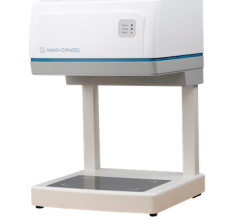February 9, 2011 — A new study from the Centre for Addiction and Mental Health (CAMH) has found evidence suggesting that a variation of a specific gene may play a role in late-onset Alzheimer's, the disease which accounts for more than 90% of Alzheimer's cases. The study combined genetics and brain imaging to determine who may be at risk for developing late-onset Alzheimer's disease long before symptoms appear.
The gene, which is called brain-derived neurotrophic factor (BDNF), is crucial to maintaining healthy function of the brain, primarily the brain's memory center of the hippocampus and entorhinal cortex, and is responsible for learning and memory function. Past research has found that less BDNF is present in the memory center of those diagnosed with Alzheimer's disease. However, genetic association studies alone have not produced definite findings regarding this gene. Instead, a combination of genetics and brain imaging were used to demonstrate clear effects of this gene in the brain.
In the study, published in the Archives of General Psychiatry, a variation of the BDNF gene called val66met was tracked and examined in healthy individuals to see what effect it had on the brain. Genotyping was used to determine which study participants carried the gene variation. Then two types of brain imaging — high-resolution magnetic resonance imaging (MRI) cortical thickness mapping and diffusion tensor imaging (DTI) (an MRI-based technique that measures key structural connections in the brain) — were applied to measure the physical structures of the brain in each individual. This combination of genetic screening and imaging found that BDNF val66met gene variation influenced exactly those brain structures and connections that deteriorate at the earliest phases of Alzheimer's disease.
"Our sample consisted of healthy adults who passed all cognitive testing and displayed no clinical symptoms of Alzheimer's disease, yet the brains of those who carried the gene variation had differences in their brain structures consistent with changes we see in people at the earliest stages of Alzheimer's disease," said Dr. Aristotle Voineskos, physician and scientist at CAMH, and principal investigator of the study.
Participants who carried the variation were more likely to have thinner temporal lobe structures and disrupted white matter tract connections leading into the temporal lobe, the same structures and neural networks that have deteriorated in the brains of Alzheimer's patients when their brains are examined post-mortem.
"In the past, Alzheimer's disease could only be diagnosed and treated once outward symptoms became present," added Dr. Voineskos. "Early identification is key because, in addition to seeking therapeutic treatments early to reduce suffering, delaying Alzheimer's onset by only two years has the potential of saving the Canadian healthcare system nearly $15 billion over the next 10 years. The combination of brain imaging and genetics is a key approach that may help us to identify people at risk for Alzheimer's disease."
This breakthrough in image-genetics research can be valuable in the research of other brain diseases and will enable researchers to examine how a gene affects the brain and possibly intervene before a person develops an illness.
The Centre for Addiction and Mental Health (CAMH) is Canada's largest mental health and addiction teaching hospital, as well as one of the world's leading research centers in the area of addiction and mental health. CAMH is fully affiliated with the University of Toronto and is a Pan American Health Organization/World Health Organization Collaborating Center.
For more information: www.camh.net


 December 10, 2025
December 10, 2025 









